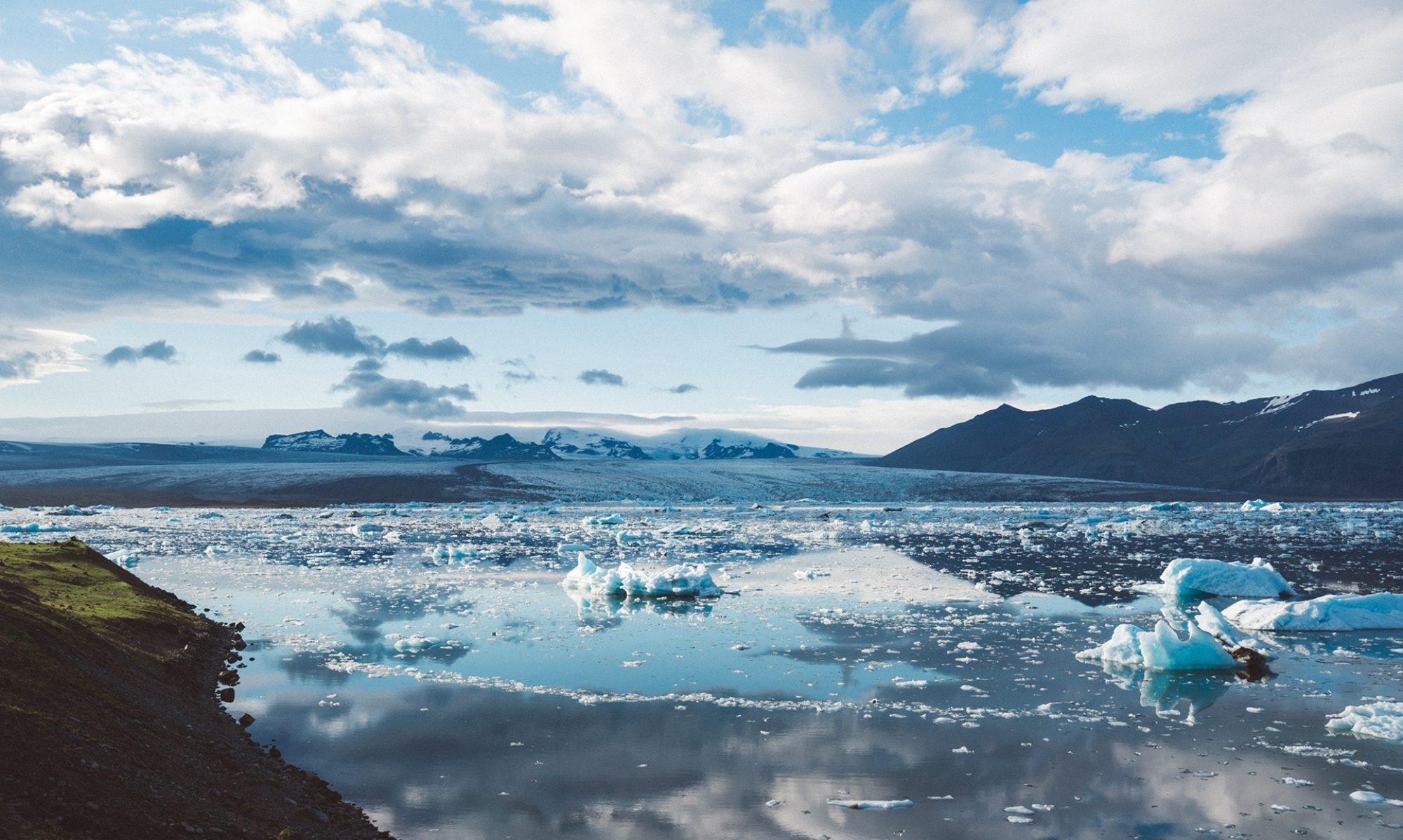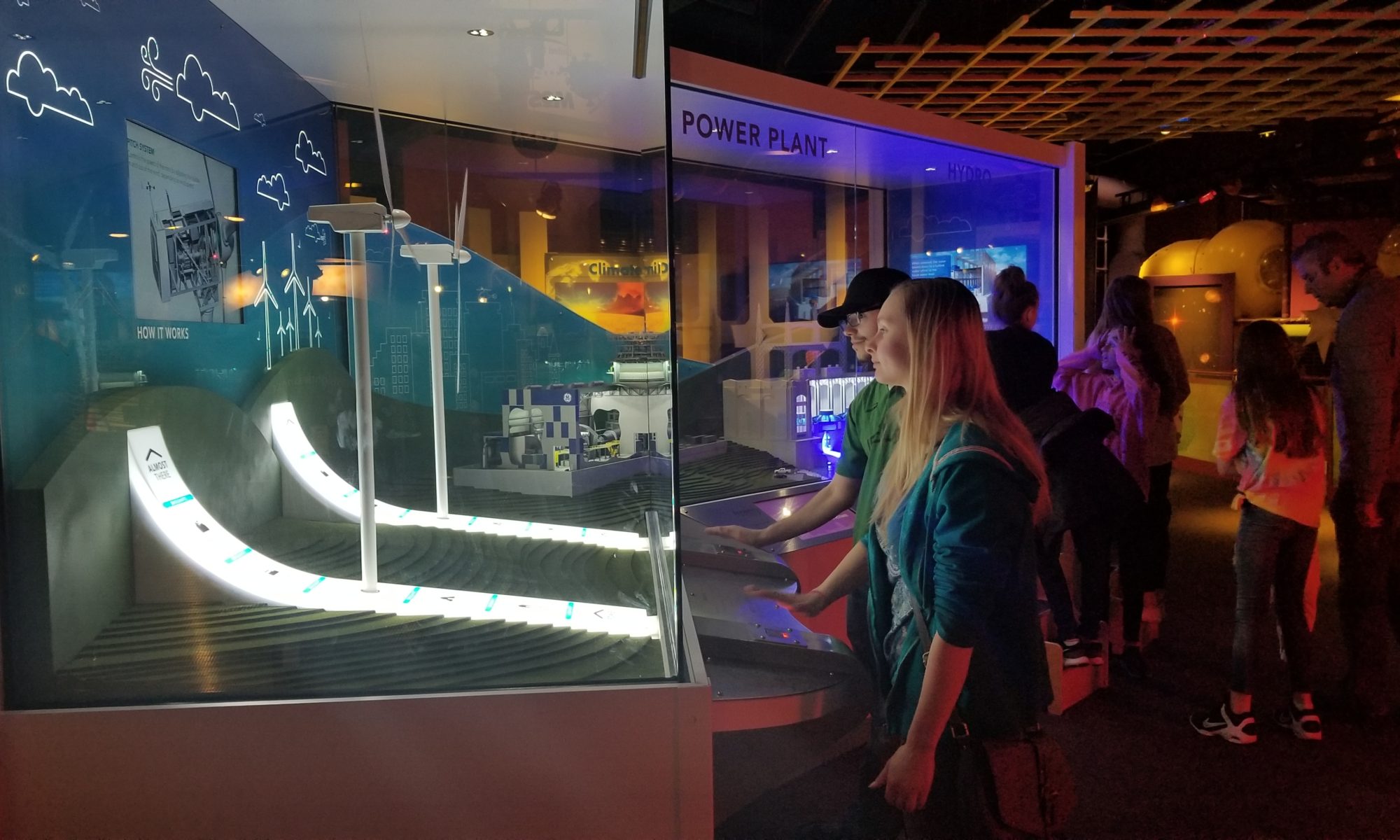Teaching Children About Climate Change
By Jessica Andreone
The Museum of Science and Technology sits in the center of downtown Syracuse, in an old armory on South Franklin street. It is a place where children of all ages can become completely immersed in interactive learning. Inside the museum are, among other things, a model of a thumping heart big enough for a person to walk through, a flight simulator, and an entire section devoted to renewable energy.
The exhibit on renewable energy offers a way for kids to learn about past, current, and potential forms of energy production. And it highlights the importance of renewable energy as we face increasing carbon dioxide concentrations in the atmosphere and the depletion of non-renewable energies.
While volunteering at the science and technology museum, I noticed Nathan, a sixth grader at Plainview Middle School, waving his hand at sensors to make some wind turbines spin and then pumping on a handle repeatedly to power a model hydro-electric plant. Nathan read about the science behind the exhibit on a touch screen display.
I asked Nathan what he learned from the exhibit and he said, “Wind turbines and how they work and how they make power through the wind.”
Along the walls of the exhibit, called “ENERGY Powering Our Future,” there are panels that discuss humanity’s first sources of energy (wood and coal), sustainable energy use, and future energy technologies such as wind and solar. The exhibit also explains the seven forms of energy, such as mechanical and heat, and how those forms are transformed into usable energy.

The interactive parts of the exhibit include a model where visitors wave a hand in front of a sensor to produce “wind,” causing the wind turbines to move and generate electricity. There is a “pump” game where visitors push down on a handle repeatedly, as if they were pumping water through a hydro-electric dam to produce electricity. There is also a game where a player can generate micro-hydro power by moving a marble, which represents water, through a slot, representing a filter. The marble shoots through a pipe and around a gear that acts as a “turbine.” When the marble forces the “turbine” to spin, the action generates electricity that in the real world would be enough to power a handful of houses.
The Alliance for Climate Education is a nationwide organization that reaches out to young people and schools to help with climate change education. Sunni Tang, senior education manager of Alliance for Climate Education, said she encourages the museums to create interactive displays for renewable energy education because these exhibits show visitors the real-world applications of what they are learning about climate change.
Another group, the National Center for Science Education, also encourages educating children and young people on climate change science, but the organization also focuses on other topics like evolution. Dr. Brad Hodge, director of teacher support for the center, said that type of material children can be taught about climate change depends on their age group. Younger children should be taught the basics on how climate change affects the planet first, he said; older groups can absorb more in-depth information and on a broader range on the climate science behind it.

During the 2014-2015 school year, the National Center for Science Education conducted a survey of 1,500 schools from all 50 states, asking them about climate education The survey found that 75 percent of public school science teachers teach their students about climate change.
The teachers’ lessons included topics like the greenhouse gas effect and the carbon cycle, information that the teachers then connected with actions that individual students, as well as governments and industry, could take to mitigate climate change. The survey also found that about three percent of the teachers said that there are both human and nature-based causes to climate change and more than a quarter of teachers devoted an equal amount of time discussing viewpoints that were skeptical about the reality of climate change.
Results from the survey indicated that many teachers did not have a clear understanding of climate change science. The teachers were asked to prioritize classroom topics related to the greenhouse effect but many of them chose topics that were not major points or issues related to this subject. The National Center for Science Education survey also said that fewer than half the science teachers in the study knew that
The National Center for Science Education and the Alliance for Climate are organizations that reach out to institutions and teachers across the country and offer lesson plans and multimedia resources to help bridge gaps in climate change education. The organizations also create special clubs and programs for young people to do outreach in their community, teaching others about the effects of climate change and what to do about it.
The survey conducted by the science education center found that 88 percent of teachers who discussed potential solutions to mitigate the effects of climate change covered renewable energies in their classes. The research also found that only 29 percent of teachers taught students that policy change was a solution and only 67 percent introduced potential career tracks related to conservation and new energy technologies.

Tang said that it is essential for young people to learn about climate change, because they are the ones who are going to be dealing with its effects. With that knowledge, young people are in a position to take on leadership roles in this area in the future.
Both Tang and Hodge said that teaching children and young people about renewable energies as a component of climate change education is important because types of energy production currently in use are mostly responsible for the large amounts of carbon dioxide being pumped into the atmosphere.
In the exhibit at the science and technology museum, one display is devoted to discussing how the burning of fossil fuels is the main cause for the increase of carbon dioxide in the atmosphere. The display also shows the effects of this increase by talking about droughts, sea level rise and ocean acidification, and how increased carbon levels harm aquatic life. The panel then proposes biomass energy – energy derived from plant materials— as a viable alternative.
For his part, Nathan said renewable energies are important. “They don’t get rid of the natural resources.”
The exhibit at the museum features displays with panels and a consistently updating screen with statistics on the world’s use of non-renewable sources of energy, including oil. The screen shows how much energy humans have used up to the moment that a visitor looks at the display, and how much of that was renewable. It also counts down to the date and time when the planet’s oil reserves will be depleted. Standing in front of the display on April 12, 2018, the screen said that with our current energy use and resource strategies, the planet’s energy reserves will be depleted in approximately 45 years.
The panel next to the screen highlights the importance of sustainable resource use by listing Heinberg’s axioms of sustainability. Richard Heinberg is an award-winning advocate for shifting to renewable energies and a senior fellow-in-residence at the Post Carbon Institute, an Oregon based organization that aids in the transition from fossil fuels to green energy, according to the institute’s website.
The axioms focus on maintaining and growing the human population based on the primary use of renewable resources and the sustainable use of non-renewable resources. The third rule states, “To be sustainable, we must let renewable resources naturally replenish faster than or equal to using them.” The fourth states, “To be sustainable, we must decrease our use of nonrenewable resources and do so faster than these resources deplete.”
Susan Conover, a grandmother and chaperone of children visiting the museum, said interactive exhibits like the one at the MOST do help students understand the importance of renewable energy.
“No question. Absolutely. Anything interactive that they can get into,” Conover said. Conover said that teaching children about renewable energies is important and it’s the way of the future.
“That’s the way we have to go,” Conover said.
Photos by Jessica Andreone

